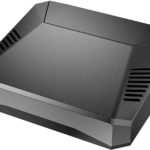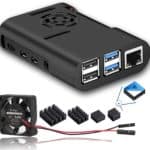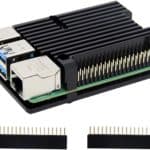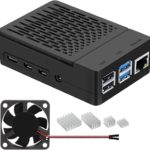Best Raspberry Pi 4 Case in 2022
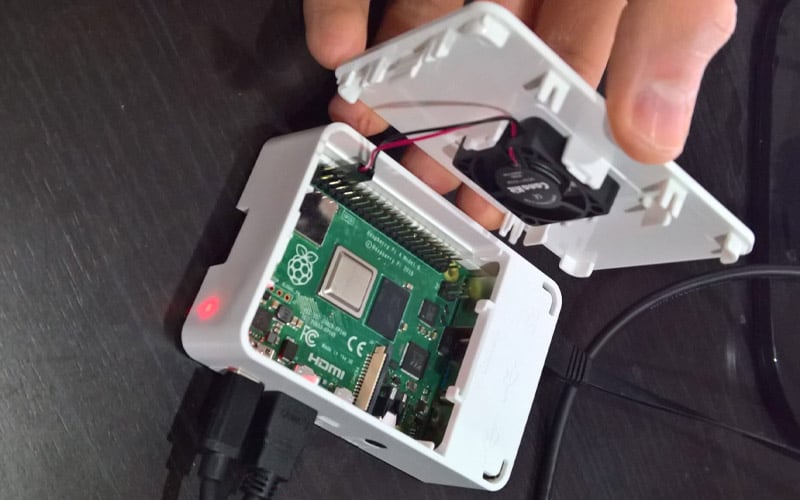
The Raspberry Pi packs a punch despite its diminutive size. Not least the Raspberry Pi 4, which bundles in enough computing juice for all manner of inventive applications and projects as well as more typical usage such as media centers, NAS, and even retro game emulation systems.
Although a Raspberry Pi can more than hold its own without a case, and in a way, a case-less Pi feels more attuned to the DIY ethos that courses through the single-board computer’s entire history, there’s logic in adding a protective outer layer to ward off dust, help keep temperatures down, and add some visual flair to what is a plain-looking circuit board. It’s, therefore, no surprise that one of the first purchases that accompanies acquiring a Raspberry Pi is that of a case.
To aid your search for the right shell for your Pi 4 board, we’ve compiled a list of the best Raspberry Pi 4 cases. While we are rather taken with our selection of cases, we understand that what’s seen as the ‘best’ morphs from person to person, especially when aesthetics are involved. As such, take our picks as recommendations to give you a gentle nudge in the right direction rather than an immutable verdict.
Products at a Glance
Best Raspberry Pi 4 Case in 2022
- Removable magnetic GPIO pins cover
- Heatsinks and fans incorporated into the case
- Two full-sized HDMI ports
- Clean back mounted ports
- Sleek aluminum design
- Pi can run very hot despite active and passive cooling
- Sketchy HDMI performance
- NES-styled case
- Excellent cooling
- Front-mounted power and reset buttons
- I/O arrangement
- NES cartridge-style SSD housing
- No GPIO access
- Ease access to GPIO
- Small form factor
- Connectivity
- Four heatsink and fan cooling
- Very affordable price point
- Loud fan
- Build quality fits the price tag
- No GPIO access slot cover
- Massive heat sink integrated into the case
- Aluminum alloy casing
- Silent cooling
- Easy GPIO access
- Form factor matches Raspberry Pi size
- Poor quality thermal pads
- GPIO extender required to use HATs
- Low price
- 40 mm cooling fan and four heatsinks
- Simple, functional design
- Access to all ports
- No GPIO access
- Loud fan
- Case incompatible with some micro HDMI cables
Does Raspberry Pi 4 need a case?
Technically with the Raspberry Pi 4, like all the other Pi iterations, you don’t need to put it in a case for it to function. However, the sensible thing to do is insert your board into a case to protect it from damage as well as preventing any debris from getting in there and messing the internals up. Moreover, having a case for your Raspberry Pi 4 will enhance it that little bit further, potentially giving it easier to access ports and with some more complex cases, cooling options.
Is Raspberry Pi 4 better for RetroPie?
Many Raspberry Pi 4 owners like to relive classic titles of old by installing RetroPie onto their machine and slotting it into an old-school case but is it better than older Pi variants? Well, yes, in fact, the Raspberry Pi 4 is better for RetroPie than all previous models. This is due to more RAM being available as well as a new Raspian base. This has allowed for more stable emulation for more powerful consoles such as the N64 which tended to struggle on the Raspberry Pi 3 machines.
How do I install a Raspberry Pi 4 fan?
Contrary to the complex nature of building a fully-fledged PC, adding components to your Raspberry Pi 4 is a pretty simplistic process. This is the same if you want to add a fan to your Raspberry Pi 4, allowing for better cooling when under more intense stress.
If you are looking to install a Raspberry Pi 4 fan, open up your case and mount it onto it. Then, plug the red, black, and blue wires into the Pi’s GPIO header. Once complete switch on your Pi and check it spins up. It’s as simple as that!
Our Verdict
As one of the most visually appealing cases, the Argon ONE V2 is our top recommendation for those in the market for a Raspberry Pi case. Easy access to the GPIO, two full-sized HDMI ports, and a clean I/O arrangement on the back make it suitable for everything from media centers to more experimental projects that require add-ons.
With a design that channels the famed NES, the Retroflag NESPi 4 Case commands a spot in our list for that alone. The SSD cartridge and NES-style front buttons, alongside excellent cooling chops and overall good build quality, make it a prime candidate for a retro gaming emulation system.
Those tapping into the power of the Pi to bring creative projects that require plenty of connectivity to life shouldn’t overlook the MazerPi Raspberry Pi 4 Case. Our money is on the Geekworm Raspberry Pi 4 Armor Case for the best cooling performance. Finally, as a budget pick, we chose the simple, yet functional iUniker Raspberry Pi 4 Case.
If you have any questions, comments, or suggestions, feel free to drop them into the comments section below.


